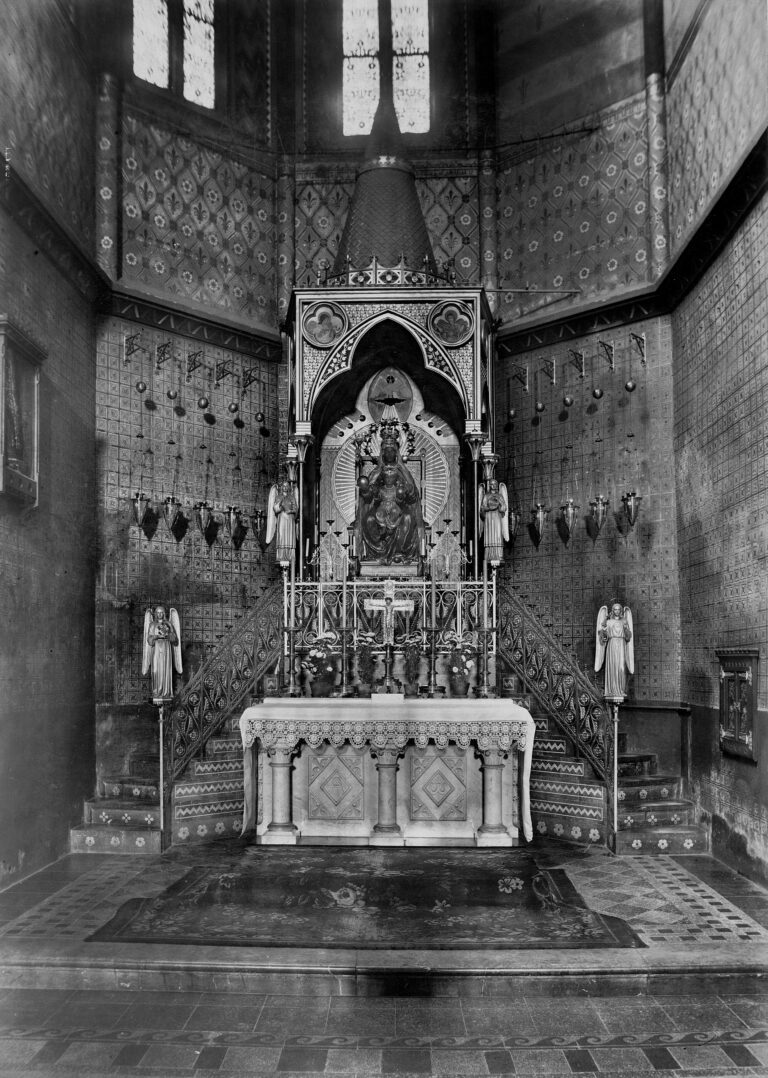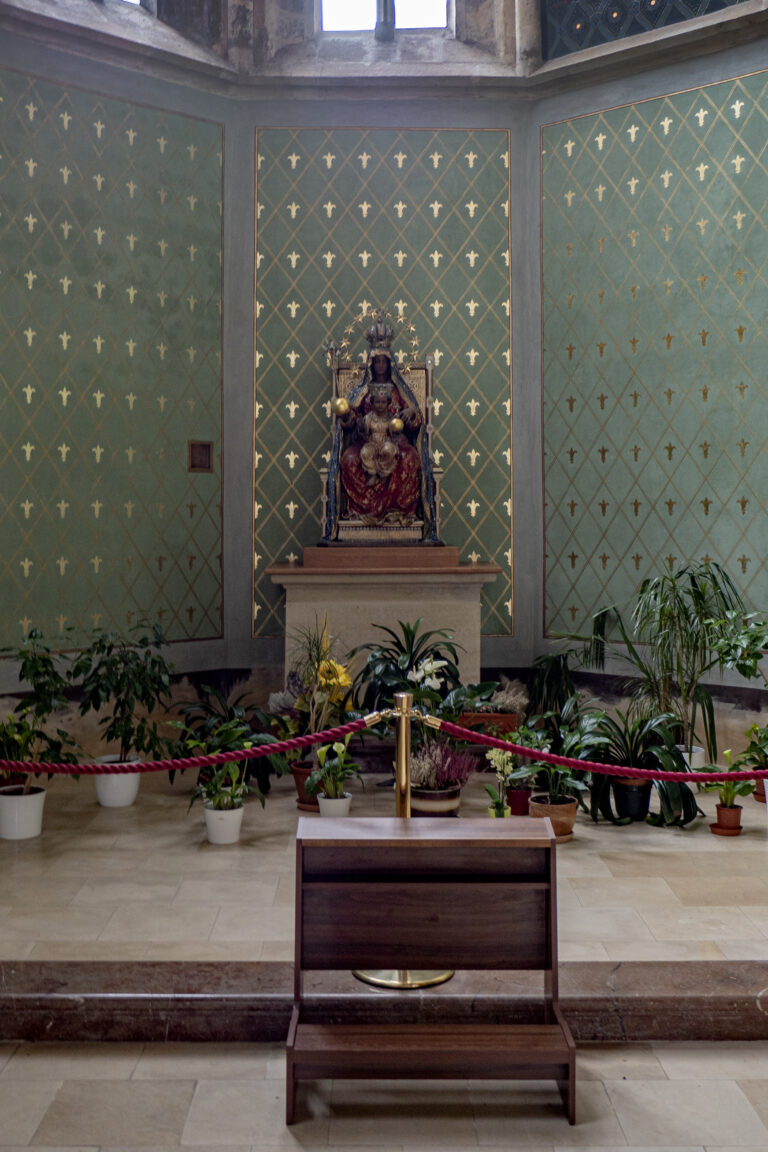Church of the Blessed Virgin Mary
The church interior, bright and spacious and unusually empty, has retained very little of its original furnishings. In 1945, the air raid is to be blamed for the destruction.
After the air raid, the statue of Our Lady of Montserrat was almost miraculously preserved at the north aisle end.
The Beuron nativity scene life-size figures regularly displayed during Christmas holidays also escaped destruction.
The presbytery Beuron murals represented the culmination of today’s unpreserved set of murals located in the church nave. A part was devoted to the Virgin Mary’s life and the other to the Saint Benedict‘s legend.
...you can travel back through time by swiping
...you can travel back through time by swiping
Statue of Our Lady of Montserrat
 HISTORY
HISTORY
 PRESENT
PRESENT
Did you know that...?
Until the end of the 18th century, the church also served as a burial ground. The Benedictines of Montserrat built crypts under the presbytary. The first one was dedicated to the abbots, the second to the monks and the third to the monastery supporters.
Benedict Penalosa de Mondragón was the first to be buried in the abbey crypt in 1646. This abbot commenced the monastery Spanish period. His tombstone is located in front of the altar’s pavement. Today the crypts are empty. The remains have been removed during the church archaeological survey in the 1960s.
The tombstone in the north side aisle pavement, in front of the Virgin Mary of Montserrat‘s altar, belongs to Jan Trnka of Křovice, "imperial councillor, scribe of the chamber court and land rolls", who died in 1631.
Other tombstones were secondarily set into the church north wall. The most interesting of them is the tombstone of Johann Götz "imperial chamberlain, war councillor and field marshal, who valiantly fought for the God’s cause and the emperor‘s against the Bohemian land enemies, the Swedes, and was killed in the great battle between Tábor and Jankov, on March 6, 1645".
In the church wall, the best preserved tombstone is the one of Baron Jindřich Paradise of Echaida, "imperial colonel, Spanish knight and lord of Kamenice", dated 1638.
Something extra!
A viewing terrace was built above the church facade, which was supposed to be climbed directly through the interior of the church. However, this part of the construction was not executed and the existing access from the monastery building does not allow the terrace to be opened to public. The unique reinforced concrete church roof frame built in 1953-1954 is accessible from the attic at the terrace level.


